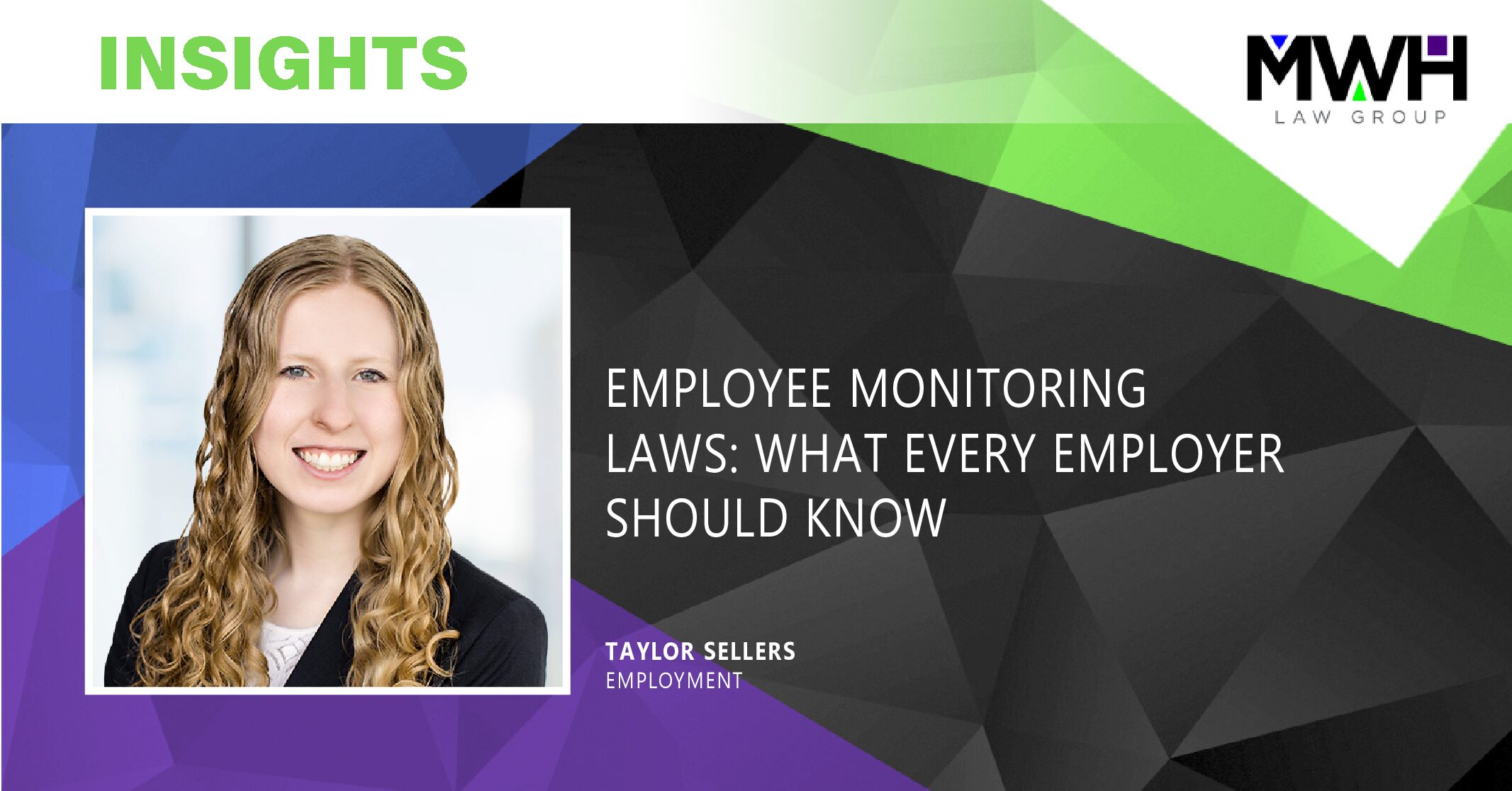Employee Monitoring Laws: What Every Employer Should Know

Employee monitoring refers to the practice of observing or tracking an employee’s activities during work hours. This can encompass a wide range of actions, including monitoring emails, internet usage, phone calls, social media usage, GPS location, and even video surveillance. While these tools can help ensure productivity and security, it’s important to remember that the rules surrounding employee monitoring vary significantly from state to state. With different jurisdictions having their own regulations, staying up to date on local laws is essential for businesses to avoid legal complications. In this post, we’ll walk you through the key things every employer should know about employee monitoring laws and how to stay compliant.
1. Key Principles
Although laws vary by jurisdiction, there are some common principles that generally apply when it comes to employee monitoring:
- Privacy Expectations: Employees may have a reasonable expectation of privacy, but it’s often diminished in a workplace setting. However, this varies by jurisdiction and what specifically is being monitored.
- Transparency: Employers should inform employees about what is being monitored and how their data will be used.
- Data Protection: Employers are typically required to protect the data they collect during monitoring from misuse or unauthorized access.
2. Types of Monitoring
- Email and Internet Usage: Employers often monitor emails and internet usage on company devices. In many jurisdictions, employers can do this as long as they provide notice to employees and explain the purpose of monitoring.
- Phone Monitoring: In some situations, employers may monitor phone calls, messages, or other communications.
- GPS Tracking: Many employers track employees’ movements using GPS devices, especially in roles that require travel or delivery services. However, this can raise privacy concerns, and employers must clearly communicate the scope and reasons for such tracking.
- Video Surveillance: Video surveillance is common in many workplaces, but there are usually regulations on where and when cameras can be placed. Employers must ensure cameras do not violate reasonable expectations of privacy, such as in bathrooms or locker rooms.
3. Federal Monitoring Laws
There are no comprehensive federal laws specifically regulating employee monitoring, but various laws may apply depending on the nature of employment and type of monitoring, such as:
- Title VII of the Civil Rights Act of 1964: Constant surveillance of an employee could be evidence of retaliation or harassment, particularly if it is targeted and lacks a legitimate purpose. Courts have recognized that such conduct may contribute to a claim of harassment or retaliation if it is part of a broader pattern of behavior that adversely affects the employee’s work environment. Fercello v. County of Ramsey, 612 F.3d 1069 (8th Cir. 2010).
- Electronic Communications Privacy Act (ECPA): Under the ECPA, employers are generally prohibited from intercepting or accessing employee communications without authorization. There is a “business extension exception” which permits monitoring if the interception device is part of the employer’s communication system and used in the ordinary course of business, and a “consent exception,” which allows monitoring if one party to the communication consents. Consent can often be implied through acknowledgment of an employer’s computer usage policy. However, it is important to review your state and local laws to determine if consent from all recorded parties is necessary.
- Health Insurance Portability and Accountability Act (HIPAA): If employees work with medical information, employers must be careful not to violate the privacy of health-related information under HIPAA.
- National Labor Relations Act (NLRA): Employers are prohibited from monitoring employees in ways that infringe on their rights to organize or engage in union activities. Employer actions that are “out of the ordinary” and create an impression of surveillance may be deemed unlawful if they have a reasonable tendency to intimidate employees under the totality of the circumstances. Factors such as the duration of observation, proximity to employees, and whether the employer engaged in other coercive behavior are considered in determining whether the surveillance is unlawful. NCRNC, LLC v. NLRB, 94 F.4th 67 (D. D.C. 2024); Intertape Polymer Corp. v. NLRB, 801 F.3d 224 (4th Cir. 2015).
4. Best Practices for Employers
To avoid potential legal risks, employers should follow these best practices:
- Create Clear Policies: Develop clear and comprehensive employee monitoring policies that specify what is being monitored, why it’s being done, and the consequences of misuse. Ensure employees acknowledge and understand these policies.
- Inform Employees: Always notify employees about monitoring practices. This can be done through employee handbooks, emails, or posted notices in common areas. Transparency is key to building trust and ensuring legal compliance.
- Limit Monitoring: Monitor only what is necessary to achieve business objectives and avoid excessive surveillance. The less intrusive the monitoring, the less likely it will infringe on employee rights.
- Secure Collected Data: Protect any data collected during employee monitoring. Ensure that it is stored securely and only accessed by authorized personnel.
- Consult Legal Experts: Given the complexity of employee monitoring laws, consult with legal professionals to ensure your monitoring practices comply with local and federal laws.
Employee monitoring is a useful tool for businesses, helping ensure productivity, security, and compliance. However, it must be approached carefully to avoid legal pitfalls. Employers should stay informed about the laws governing employee privacy and monitoring practices in their region, ensure transparency by informing employees about monitoring, and adopt fair and reasonable practices that foster trust. By taking these steps, businesses can protect themselves from legal risks while maintaining a positive, respectful work environment.

